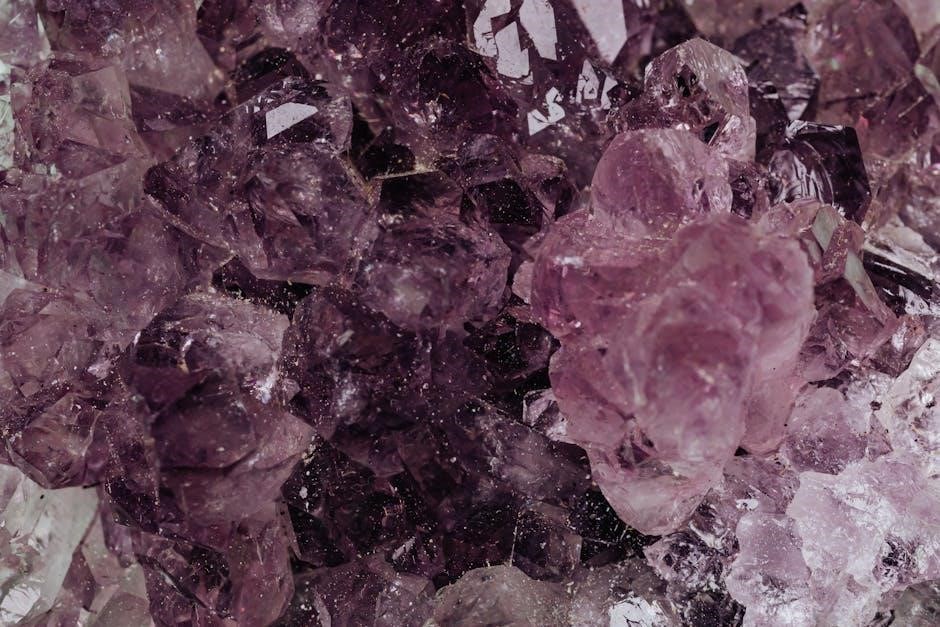coffee guide
Coffee beans, the seeds of the coffee plant, are the foundation of every cup of coffee. There are four main types⁚ Arabica, Robusta, Liberica, and Excelsa, each with unique flavors and characteristics. These beans are cultivated worldwide, and each type is valued for its distinct qualities.
Overview of the main types of coffee beans
The coffee world is primarily dominated by four main types of beans⁚ Arabica, Robusta, Liberica, and Excelsa. Arabica, the most popular, boasts a smooth, sweet flavor profile with notes of fruit and chocolate. Robusta, known for its strength, has a more bitter taste and higher caffeine content. Liberica beans, less common, offer a unique, smoky flavor. Excelsa, often considered a variant of Liberica, presents a tart, fruity profile. These four types form the basis of the vast array of coffee experiences available globally, each offering distinct characteristics.

Arabica Coffee Beans
Arabica beans are the most popular worldwide, comprising about 60% of the world’s coffee production. They are prized for their smooth, nuanced flavors and delicate aromas, making them a favorite.
Characteristics and flavor profile of Arabica beans
Arabica beans are known for their delicate and nuanced flavor profiles. They often exhibit a smoother, sweeter taste with notes of fruit, berries, and flowers. Depending on the specific variety and growing conditions, you might also detect hints of chocolate or nuts. These beans generally have a higher acidity, contributing to a bright and vibrant cup. The aroma is typically fragrant and appealing, making them a popular choice for coffee enthusiasts who appreciate complexity and subtlety in their brew. Arabica is considered to be of higher quality than other bean types.
Origins and cultivation of Arabica coffee
Arabica coffee beans are believed to have originated in the highlands of Ethiopia centuries ago, possibly being the first coffee beans ever consumed. These beans are primarily cultivated in regions with high altitudes, tropical climates, and abundant rainfall. Ideal growing conditions include well-drained soil and consistent temperatures. Arabica plants are delicate and require careful nurturing, making their cultivation more challenging than other varieties. They are grown in many countries worldwide and require specific conditions to thrive, resulting in a diverse range of flavour profiles based on their origin.
Robusta Coffee Beans
Robusta coffee beans, the second most popular type, are known for their strong, bold flavor and higher caffeine content. These beans are often used in blends to add a kick.
Characteristics and flavor profile of Robusta beans
Robusta beans are characterized by their robust and bold flavor profile, often described as having a nutty, rubbery, or chocolatey taste with a bitter edge. They have a higher caffeine content than Arabica beans, which contributes to their strong and stimulating effect. Robusta beans produce a crema, making them popular in espresso blends. Their flavor is less nuanced and delicate compared to Arabica, providing a more straightforward, intense coffee experience. The beans are known for their resilience and tolerance to various climates, which makes them easier to cultivate in different regions.
Origins and cultivation of Robusta coffee
Robusta coffee, scientifically known as Coffea canephora, originated in sub-Saharan Africa, with its main historical cultivation areas being in regions like Uganda and the Ivory Coast. This type of coffee is particularly well-suited to hot and humid climates, making it easier to grow than Arabica in lower altitudes. Robusta plants are more resilient to diseases and pests. These plants have become widely cultivated in Southeast Asia, particularly in Vietnam, which is now a leading global producer of Robusta. The cultivation methods tend to be less demanding than Arabica, contributing to its lower production costs and its use in commercial blends.

Liberica Coffee Beans
Liberica beans, originating from Liberia, are a rare and intriguing coffee variety. They make up a small fraction of the world’s production, known for their unique, often smoky and woody flavor profiles, setting them apart.
Characteristics and flavor profile of Liberica beans
Liberica beans are known for their distinctive and bold flavor profile, often described as smoky, woody, and even floral. They possess a unique aroma that can be quite different from Arabica or Robusta. The beans themselves are larger and more irregular in shape compared to other varieties. Liberica coffee tends to have a full body and a somewhat pungent taste, making it a less common choice for everyday drinking, but valued for its unique taste. These beans offer a complex and sometimes polarizing experience, appealing to those seeking a departure from the norm.
Scarcity and unique traits of Liberica coffee
Liberica coffee beans are quite scarce, accounting for less than 2% of the world’s coffee production. This limited availability contributes to their mystique and higher price point. The Liberica tree is known for producing irregular, elongated cherries, with beans much larger than other varieties. Its unique flavor profile, often described as smoky and woody, sets it apart from more common beans. Liberica’s distinct taste and rarity make it a sought-after choice for coffee enthusiasts looking for unique and adventurous experiences. Its cultivation is also limited, contributing to its scarcity.
Excelsa Coffee Beans
Excelsa coffee beans, once considered a separate species, are now classified as a member of the Liberica family. They offer a tart, fruity flavor, and are known for their light body.
Characteristics and flavor profile of Excelsa beans
Excelsa beans present a unique profile, often described as tart and fruity, with a light body. Unlike the more common Arabica and Robusta, Excelsa offers a distinctly tangy flavor, sometimes reminiscent of dark roasted flavors. Its lower acidity contributes to a smooth mouthfeel. These beans are not as widely available, contributing to their mystique among coffee enthusiasts who enjoy exploring less traditional flavor profiles. The aroma can be quite intense, often carrying notes of dark fruit. These beans are not as popular as Arabica or Robusta, but they provide a unique experience for coffee drinkers.
Rarity and cultivation of Excelsa coffee
Excelsa coffee beans are considered rare, making up a small fraction of the world’s coffee production. These beans are primarily grown in Southeast Asia, with limited cultivation in other regions. The trees themselves are known to be quite resilient, growing well even in less than ideal conditions. The scarcity of Excelsa beans is due to a variety of factors, including lower yields compared to Arabica and Robusta. Cultivating Excelsa can be more challenging, demanding specific environmental conditions and farming expertise. This limited production contributes to the unique and often sought-after nature of Excelsa coffee.

Sub-Varieties and Hybrids
Beyond the main types, numerous sub-varieties and hybrids exist, like Bourbon and Geisha. These offer diverse flavor profiles, adding complexity to the coffee world. Each has unique traits.
Examples of popular sub-varieties like Bourbon, Geisha
Within the vast world of coffee, certain sub-varieties and hybrids stand out for their exceptional qualities. Bourbon, known for its sweet, caramel-like notes, is a popular choice among coffee enthusiasts. Geisha, a highly prized variety, is celebrated for its delicate floral aromas and tea-like flavors. These sub-varieties, along with others like Catimor and Caturra, demonstrate the incredible diversity found within the coffee species. Each of these varieties is cultivated for its distinctive taste, offering a wide spectrum of options for coffee lovers to explore, making the coffee experience ever more enjoyable.
Coffee Blends
Blending different coffee beans is a technique used to create unique and balanced tastes. By combining different varieties, roasters can achieve specific flavor profiles and complexities not found in single-origin coffees.
How blending different beans creates unique tastes
Blending coffee beans is an art form that allows roasters to craft complex and nuanced flavor profiles. By carefully combining beans from various origins and types, such as Arabica, Robusta, Liberica and Excelsa, a roaster can achieve a taste that is greater than the sum of its parts. The process involves selecting beans with complementary characteristics to balance acidity, body, and aroma. For instance, a blend might pair the bright acidity of an Arabica with the bold strength of a Robusta, resulting in a more balanced cup. This technique enables roasters to create signature blends that cater to diverse preferences, offering a wide array of unique tastes and experiences.

Choosing the right coffee beans
Selecting the perfect coffee beans depends on personal taste and brewing methods. Consider flavor preferences, desired caffeine levels, and roast types when making your choice to enjoy your perfect cup of coffee.
Factors to consider when selecting beans
When choosing coffee beans, several factors play a crucial role in determining your ideal cup. First, consider the bean type⁚ Arabica offers nuanced flavors, while Robusta provides a stronger, more bitter taste and higher caffeine content. Roast level is another essential aspect, influencing the final flavor profile, from light and bright to dark and bold. Additionally, think about the origin and processing method, as these contribute to unique characteristics. Finally, consider your preferred brewing method, as certain beans may be better suited for different styles.











Leave a Comment